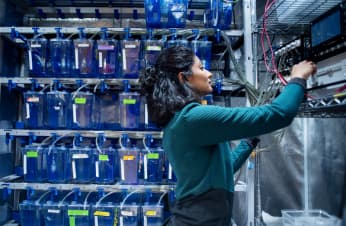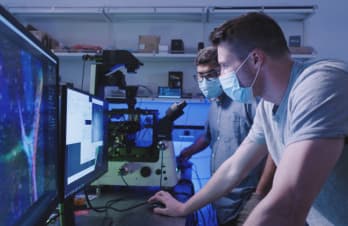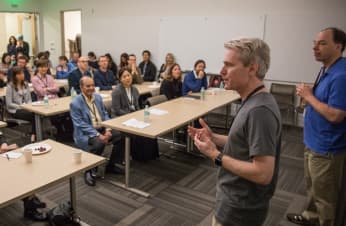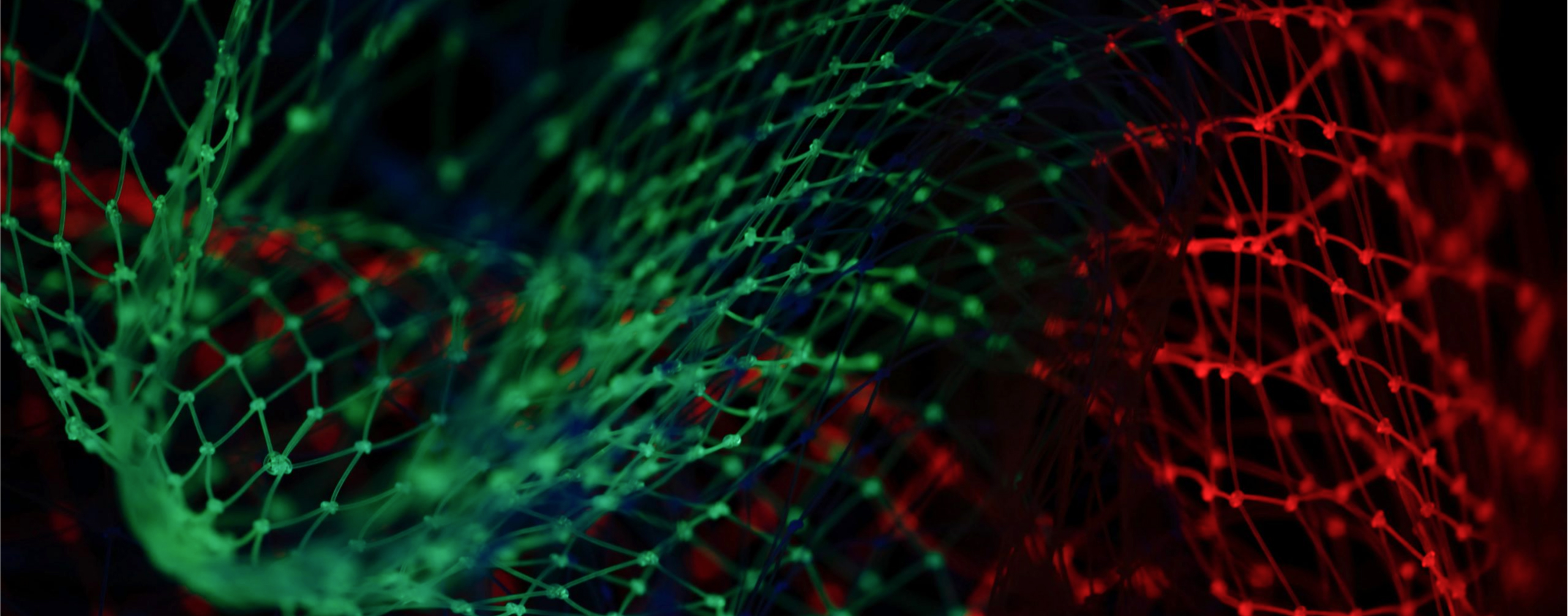ABOUT
Chan Zuckerberg Biohub San Francisco awarded three-year grants to support cutting-edge biomedical research from seven teams of scientists, physicians, and engineers, with each team including faculty members from the University of California, San Francisco (UCSF); the University of California, Berkeley (UC Berkeley); and Stanford University. Learn more about other CZ Biohub fellowships and competitions.
We have made awards to seven teams altogether, beginning with the CZ Biohub Microbiome Initiative, which was launched in 2017 as a pilot program to bring together eight leading microbiome experts from all three campuses based on their highly complementary and synergistic research interests. Based on that success, we held a competition to select six Intercampus Research Award teams, which received awards in 2018.
TEAMS
Microbiomes: investigating microbial influence on human health
Jillian Banfield (UC Berkeley); Michael Fischbach (Stanford); Kerwyn (KC) Huang (Stanford); Alexander (Sandy) Johnson (UCSF); Katherine Pollard (Gladstone Institutes/UCSF); David Relman (Stanford); Justin Sonnenburg (Stanford); Peter Turnbaugh (UCSF).
Humans are colonized by communities of microbes that influence many aspects of human health, from nutrition and immune function to drug metabolism. Although technological advances have made it easier to enumerate which microbes are present in different individuals and how the composition of microbial communities changes over time, the mechanisms by which these microbial communities contribute to human biology are not well understood. A major question is how changes in an individual’s microbiome and differences in the composition of the microbiome between individuals influence human health. The team will take advantage of new technologies to interrogate and manipulate the microbiome, approaching the microbiome from the perspectives of engineering, ecology, and genetics and focusing on methods of precise measurement that will enable mechanistic insight.
Beyond model systems: insights into genome evolution and cellular innovations
Christopher Lowe (Stanford); Wallace Marshall (UCSF); Stephen Palumbi (Stanford); Daniel Rokhsar (UC Berkeley); Irving Weissman (Stanford), Project Leaders. Ayelet Voskoboynik (Stanford), Collaborator.
Biomedical research usually focuses on a few well-studied model organisms like mice or fruit flies, but some questions in biology are hard to answer using these organisms. For example, it is hard to study limb regeneration in mice, since mice don’t regenerate limbs. The ocean is full of organisms that are built in very different ways and that offer an opportunity to develop new approaches to human health in areas such as regeneration, immunity, stem cell biology, and aging. The team seeks to harness diverse marine organisms in combination with state-of-the-art genomic technology to answer a set of fundamental questions in biology that have gone unanswered for over a century, with a focus on animal development, regeneration, immune function, and genome maintenance and stability.
Defining host responses of virus-infected and uninfected neighbor cells
Laurent Coscoy (UC Berkeley); Karla Kirkegaard (Stanford); Melanie Ott (UCSF/Gladstone Institutes); Peter Sarnow (Stanford), Project Leaders. Nir Yosef (UC Berkeley), Collaborator.
How viral infections spread within tissues is poorly understood. Infected cells can induce changes in neighboring cells to enhance viral spread (pro-viral responses), or to block infection (anti-viral responses). The team brings together expertise in virology, immunology, and RNA biology to define the cellular pathways induced in infected and uninfected neighboring cells and their influence on viral replication. The team will focus on how RNA transmission, alterations in viral and cellular RNA stability, and nutritional status can elicit pro- or anti-viral responses in neighbors, drawing on their expertise in culturing 3D human organoids to provide realistic models for the complex interactions that occur between cells in human tissue. Understanding the mechanisms affecting viral spread within tissues will lead towards new treatments for viral infections.
Imaging complex biological machines in action
John C. Boothroyd (Stanford); Wah Chiu (Stanford); Carolyn Larabell (UCSF); James A. Sethian (UC Berkeley), Project Leaders. Mark Le Gros (UCSF); W.E. Moerner (Stanford), Collaborators.
The team will develop an integrated pipeline for determining the structure and function of exceedingly complex molecular machines in intact cells. They will develop new approaches for specimen preparation, data collection, and image analysis so that a single sample can be observed using several complementary imaging technologies that reveal different features and span a range of magnifications. This will allow the team to determine with nearly atomic resolution the structures of molecular machines composed of a large number of distinct proteins while also determining the orientation and position of the machines within cells, providing previously inaccessible functional insights. They will use their methods to characterize the machinery that Toxoplasma and related parasites, like the one responsible for malaria, use to invade human cells.
Machine learning for interpreting rare genetic variation in comprehensive newborn screening and pharmacogenetics
Russ B. Altman (Stanford); Steven E. Brenner (Berkeley); Carlos Bustamante (Stanford); Renata C. Gallagher (UCSF); Kathleen M. Giacomini (UCSF); Michael I. Jordan (UC Berkeley), Project Leaders. Jodi Halpern (UC Berkeley); Barbara Koenig (UCSF); David Magnus (Stanford); Jennifer Puck (UCSF), Collaborators.
In California, 500,000 babies are born each year, some of whom have genetic mutations that cause disease or altered responses to medications. Recognizing which genetic variants cause problems is surprisingly difficult, impeding the use of genetic information to inform early intervention or the customization of patient care. The team has drawn together experts in biology, computer science, medicine, and ethics to develop new methods for identifying genetic variants that cause disease, focusing on serious newborn diseases and on gene variants that affect patient responses to medications. The team will collect experimental data and develop innovative machine learning techniques to predict the functional consequences of genetic variants.
Multi-scale deep learning and single-cell models of cardiovascular health
Rima Arnaout (UCSF); Euan Ashley (Stanford); J. Ben Brown (UC Berkeley); Atul Butte (UCSF); James Priest (Stanford); Bin Yu (UC Berkeley), Project Leaders. Chris Ré (Stanford); Deepak Srivastava (UCSF/Gladstone Institutes), Collaborators.
The team will develop methods to accelerate the pace of discovery of genetic determinants for cardiovascular disease. They will develop new statistical machine learning tools to analyze morphological and functional parameters of the heart from clinical images, an approach that can be scaled to analyze millions of images. They will also develop machine learning tools based on enhanced iterative random forests (iRF) to identify genetic variants likely to account for some of the variation in cardiovascular morphology and function observed in their analysis of clinical images, utilizing publicly available large-scale clinical data sets and local patient cohorts. Finally, they will identify genetic variants responsible for functional phenotypes using cell-based in vitro model systems.
Social network analysis of neuroimmune interactions in the developing human brain
Tomasz Nowakowski (UCSF); Alex Pollen (UCSF); David Schaffer (UC Berkeley); Alice Ting (Stanford); Chun Jimmie Ye (UCSF); James Zou (Stanford), Project Leaders. Kole Roybal (UCSF); James Wells (UCSF), Collaborators.
The team seeks to develop scalable technologies for studying intercellular interactions in the human brain. They will establish a panel of synthetic antibodies that recognize distinct cell types in the human brain and develop tools (“molecular flight recorders”) to monitor and record the history of single cells as they respond to signals and interact with neighboring cells. The team will apply these tools to understand how the specialized innate immune cells in the brain (microglia) interact with other types of brain cells, interactions that have been proposed to play a key role during normal brain development and in psychiatric and neurodegenerative diseases. The tools and technologies developed by the team will be broadly applicable to study interactions between many cell types in diverse organs and tissues.











